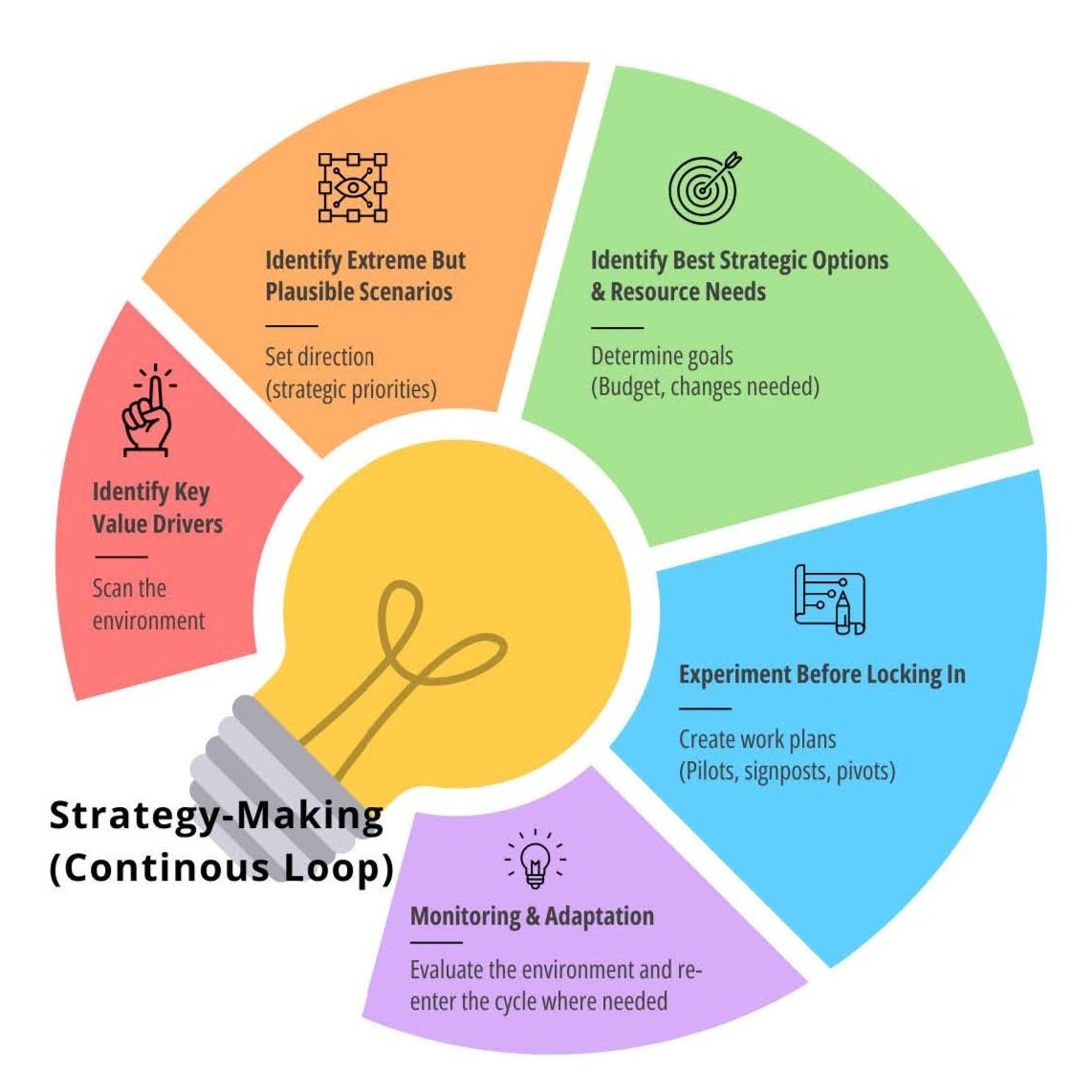Not-Your-Mother's Strategic Planning: Why & How Kavi Changed Our Approach
In the thirty years and more than one hundred strategic plans Kavi has worked on, never before have we witnessed this magnitude of change in strategic planning.
Why the shift?
The unprecedented challenges we face as humans, such as climate change, coupled with our world’s current volatility and the remnants of COVID isolation and exhaustion, have changed what is expected - even demanded - of organizations and their leaders.
What is being asked of organizations now?
It’s reasonable to ask these questions! Our world is shifting - and so too must our organizations.
So, what do these changes mean for strategic planning?
To help organizations meet these shifting expectations, strategic planning is evolving into continuous strategy-making, coupled with an increased emphasis on stakeholder engagement in the planning process and creating plans that make organizations more responsive, nimble, and resilient.
Strategy making is a continuous loop rather than a linear path.
Instead of a plan that is stuck at the time of its creation, or worse - a plan that sits on a shelf, continuous strategy-making has a few key components:
Longer-term focus: The environmental scan (what’s happening in climate change, politics, demographics, social trends, etc.) looks 10-20 years into the future to identify a north star to guide the organization while allowing for shifts in the path to get there.
Continuous scanning: Once the strategic priorities are set, the organization partners with key stakeholders to scan the environment for indicators that shift in short or mid-term plans may be needed to seize new opportunities or mitigate risks as the organization works towards its long-term strategic priorities.
Deepened stakeholder relationships: Begin with inviting partners and clients into the scanning process, gathering input as the strategic priorities take shape, and partnering with stakeholders on a scanning process that is mutually beneficial.
Does This Shift Excite You?
It excites us! The shift to strategy-making aligns with Kavi’s approach to strategic planning, which was forged by our experience in leading collaborations, mergers, and joint strategic planning efforts between diverse and, at times, diametrically opposed stakeholders. Our experience has taught us that the most impactful initiatives:
Unite staff, board, and partners behind what matters most
Involve stakeholders in the process so that change is informed by life through their eyes
Create organizational flexibility so that as the “how” of the work changes, organizations remain true to their strategic priorities and commitments
If your organization is curious about shifting to strategy-making, please contact us for a free consultation to explore options: yourfriends@kaviconsultingservices.com. We’d be honored to work with you!


